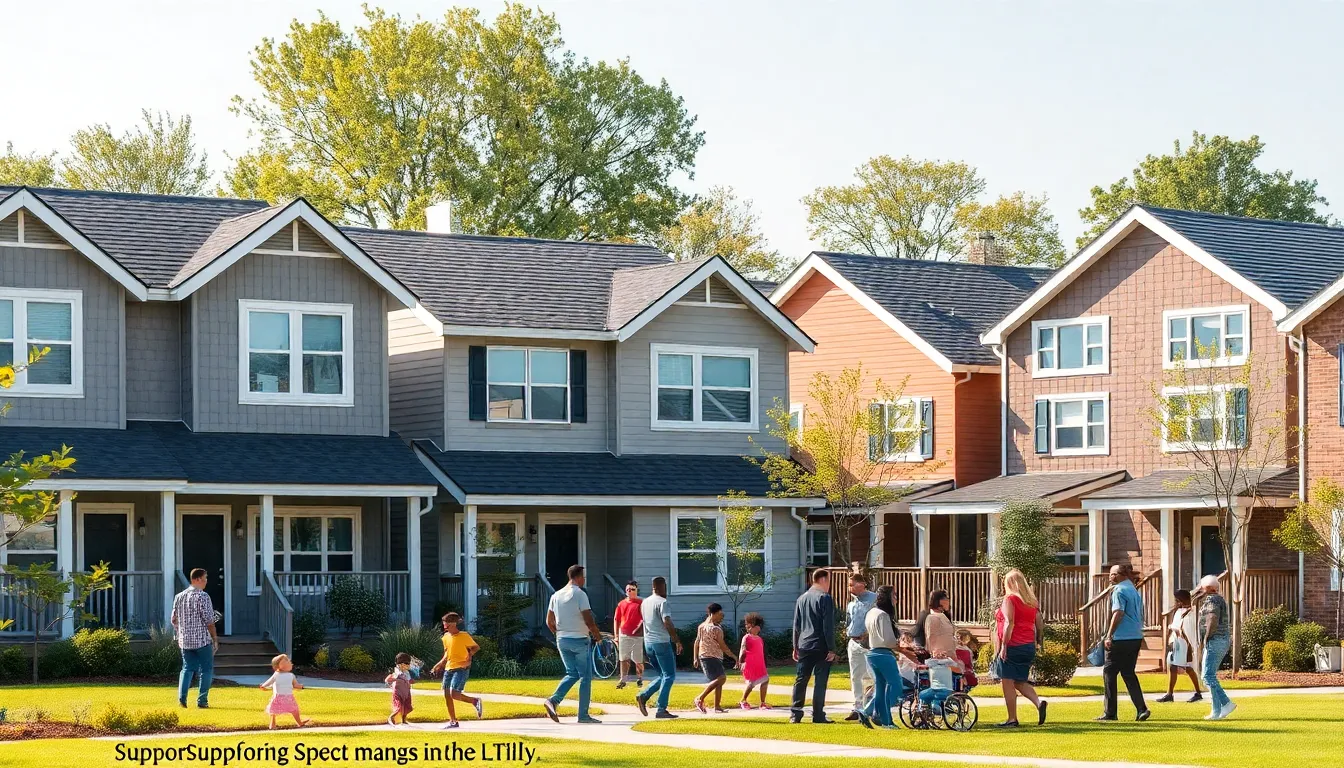Affordable housing is a term often thrown around, but it might as well be an elusive unicorn for many. It sounds good in theory, but when it comes to actual options, things can get a bit foggy, like trying to read a menu in a dimly lit restaurant. No worries, we’re diving into the nitty-gritty of affordable housing types, making it as clear as day. Whether you’re a first-time homebuyer or just wondering how to avoid living in your parents’ basement indefinitely, understanding affordable housing is the key to unlocking your dream of a comfy and economically manageable home.
Table of Contents
ToggleUnderstanding Affordable Housing

Affordable housing refers to residential units that are affordable for individuals or families with low to moderate incomes. But what does that actually mean? Simply put, it’s housing that costs no more than 30% of a household’s gross income. Various factors, location, size, and available amenities, play a significant role in defining what “affordable” looks like. The goal is to make sure everyone has a roof over their head without sacrificing their ability to pay for food and other essentials.
Government-Sponsored Programs
When it comes to affordable housing, the government plays a crucial role. Several programs exist to help make housing accessible and affordable. Let’s look at some key programs:
Public Housing
Public housing is directly owned and managed by public housing authorities. This type of housing is often geared towards the neediest families and low-income communities. Residents typically pay 30% of their income toward rent, making it an attractive option for those in need.
Section 8 Housing Choice Voucher Program
The Section 8 program offers more flexibility. Instead of targeting tenants for specific housing, it gives vouchers that can be used to rent homes in the private market. This opens up a wider choice of units, allowing families to select housing in neighborhoods that best suit their needs.
Low-Income Housing Tax Credit (LIHTC)
The LIHTC program encourages the development of affordable rental housing for low-income households. By offering tax credits to developers, this initiative fuels the construction of new affordable units, which helps tackle the housing crisis in cities across the nation.
Types Of Private Affordable Housing
Private affordable housing can be just as diverse as government-sponsored options. Here are a few types on the private side:
Cooperative Housing
Cooperative housing, or co-ops, allows residents to buy shares in a corporation that owns the building. This unique arrangement promotes community living and shared decision-making. Co-ops often operate at lower costs because they’re nonprofit-oriented.
Community Land Trusts
Community land trusts are nonprofit organizations that acquire and hold land for the benefit of the community. They sell homes on the land but keep ownership of the land itself. This model ensures lasting affordability, as homeowners can only sell their homes to other qualified buyers at a limited appreciation rate.
Inclusionary Zoning
Inclusionary zoning mandates that a certain percentage of new developments must be affordable to low-income residents. This law helps maintain economic diversity in neighborhoods while also providing more housing options for those who might otherwise be priced out.
Innovative Housing Solutions
As the housing crisis continues, innovative solutions for affordable living are emerging. Here are two noteworthy concepts:
Tiny Homes and Micro-Apartments
These compact living spaces are becoming increasingly popular. Tiny homes are typically under 400 square feet, making them efficient in both space and cost. Micro-apartments, slightly larger but often designed for single occupancy, capitalize on urban living by maximizing every inch.
Accessory Dwelling Units (ADUs)
ADUs, often called granny flats, are self-contained living spaces on a property, typically in backyards of single-family homes. They offer a unique solution for homeowners looking to supplement their income or provide affordable housing options for family members.
Alternative Housing Models
Beyond traditional methods, several alternative housing models are gaining traction:
Sustainable Housing Initiatives
Sustainable housing not only focuses on affordability but also emphasizes environmental responsibility. Green initiatives, like energy-efficient designs and the use of sustainable materials, allow homeowners to save on utility costs while contributing to a healthier planet. These innovative designs aim to make living more affordable without sacrificing quality.
Summary of Key Affordable Housing Models
Summarizing, affordable housing comes in various forms, both through government programs and private initiatives. Options like public housing, Section 8 programs, and LIHTC offer solutions for those struggling with rental costs. Similarly, cooperative housing, community land trusts, and inclusionary zoning provide alternatives for individuals seeking affordable homes without sacrificing quality. Innovative solutions, including tiny homes, ADUs, and sustainable housing efforts, showcase the diverse avenues available for anyone in search of affordable living.

